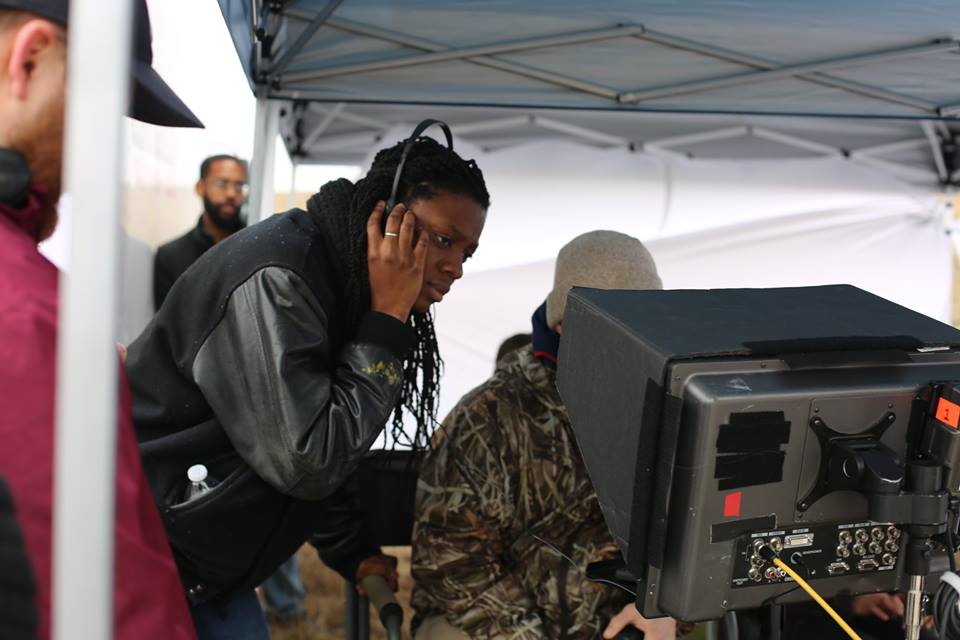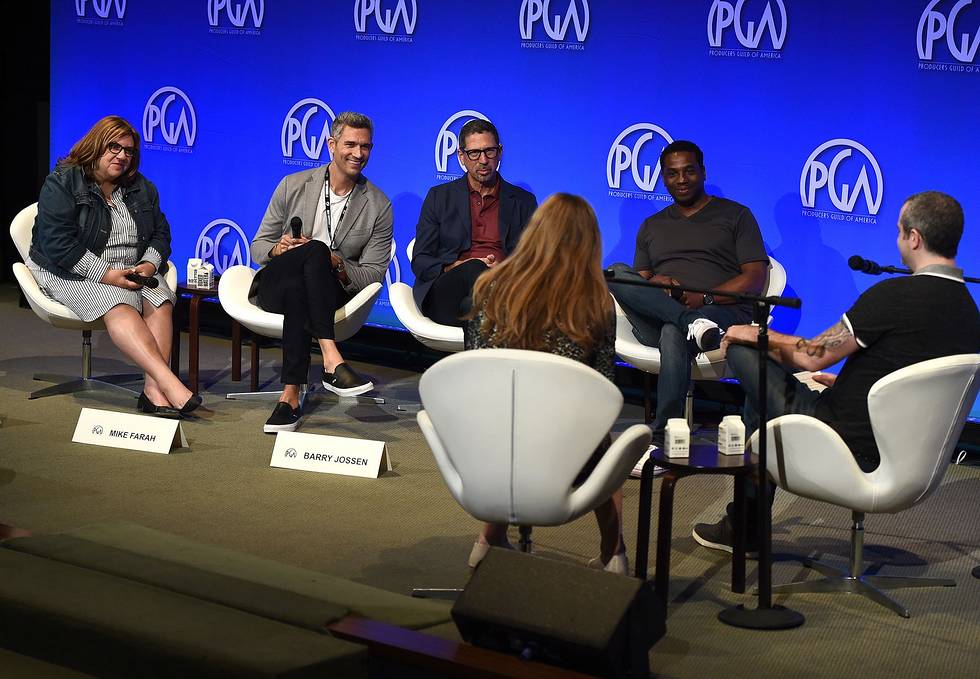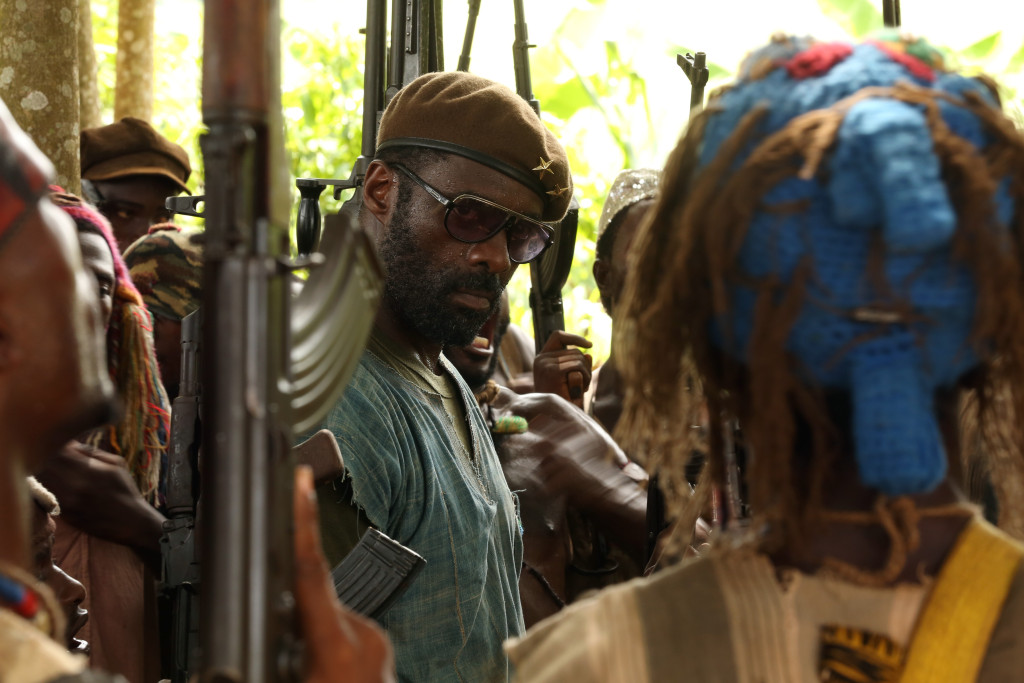If you’re not yet familiar with the work of writer/director NIA DaCOSTA, chances are you will be soon. The NYU Film School alum broke out with her very first feature film at the 2018 Tribeca Film Festival. That feature, the Western-tinged rural drama LITTLE WOODS, ended up winning DaCosta the festival’s Nora Ephron Prize, though that wasn’t the only exciting development that followed the film’s festival run. Last fall, Nia was hired by Jordan Peele to direct the upcoming Candyman reboot that he’ll produce for his Monkeypaw Productions and Universal/MGM.
But before audiences get the chance to see DaCosta’s studio-backed talents, they’ll be able to see the indie film that put her on the map when Little Woods arrives in theaters on April 19, courtesy of distributor Neon. The film centers on two sisters, Ollie (Tessa Thompson) and Deb (Lily James), finding themselves working outside the law in order to better their lives in their oil boom town near the North Dakota-Canadian border. Lance Reddick, Luke Kirby, and James Badge Dale co-star in the film.
We had the chance to speak with writer/director Nia DaCosta about her path to making Little Woods and what her filmmaking future has in store.
——
COLIN McCORMACK: The rural setting of the film is not only vital to the story but really to the whole genesis of you writing the script. Could you talk about what motivated you to write a script centered in rural North Dakota?
NIA DaCOSTA: I just wanted to tell a story in rural America. I’m from New York City. I was born and raised there and I was really struck by how different my life was from the women who lived in these places, even if we’re sort of similar in terms of not being well-off or politically or whatever. I thought it was interesting how different our lives could be and also how little we talk about the experiences of women in rural America, especially in the media. Winter’s Bone and Frozen River were big influences for me because I was like, “Wow, I didn’t know anything about this border with Canada and this Native American reservation,” or, “I didn’t know anything about what this girl’s experience growing up in the Ozarks would be like.” So it was really about my own desire to learn more, which is what compels me to write in the first place. And then with rural North Dakota, it was in the research of me looking for the right place to set it. This part of North Dakota was going through an oil boom, so all these things I wanted to talk about ended up getting magnified through that setting. It was a mix of those two things that led me to that place.
CM: Were you able to travel there at all during the writing or pre-production as part of your research?
ND: I’d written drafts of the script before I was able to go out there in the first place because I’m a working class filmmaker so I couldn’t afford to up and go to North Dakota for however long. But with the help of the Sundance Institute, which I had done the Screenwriters and Directors Labs through, I got a grant from them and was able to go up there with my producer and do research. I talked to people and talked them through the story and shared our stories. It was really, really informative and really useful. It was great.
CM: What was the location scouting process like, particularly in trying to match the place that you’d spent so much time studying and visiting and writing to?
ND: It was thorough, I’d say. We looked at places in Canada; obviously, my first choice was to shoot in North Dakota entirely, but with the limits of our budget and also with the season in which we could shoot because of Tessa’s schedule, it would have been January-February in North Dakota. Which besides it being insanely cold, would have been so impractical and also impossible for the money we had. But even without the weather, we’d have to fly in literally everyone, bring in all of our camera equipment and it would have been too risky and irresponsible for the budget we had. So we looked at parts of Ontario, we drove all around Manitoba, then basically my producer Gabrielle Nadig said, “Well, Texas sort of looks similar.” And we were like, “That’s impossible. How dare you!” But then we went down there and we took all these pictures and then I remember there was a moment where I was looking and couldn’t tell the difference between North Dakota or Texas and I was like, “Well alright, I guess we’re shooting in Texas!” But then we were able to do two days of pickups with Tessa in North Dakota, so that was really useful.
CM: I was shocked when at the end credits it said Austin. I never would have pegged that – as someone who’s only basically been in the downtown parts of Austin.
ND: We mostly shot around Austin and the Hill Country. Some of our interiors and some stage work was in Austin, but yeah, it’s crazy.
CM: By shooting in Austin, were you able to pull from that local film scene for cast or crew or other types of support?
ND: Oh, 100%. We only flew in I think two crew, three maybe. And we flew in five actors. We had an extensive– like dozens of cast and dozens of locations, and everyone else was Austin- or Texas-based.
CM: You mentioned Winter’s Bone and Frozen River. Were there other cinematic influences on the film?
ND: As a genre, westerns were really influential to me. I was kind of saying at a time, “It’s a modern western.” Not in that there are guns or robberies or whatever, but more that it’s about people who live on a frontier of a certain type in a modern gold rush town – except this is oil and fracking in a very modern sense. It’s really about this woman, this main character you could say is a lone gunslinger, who has to give up her vices to move on with her life and live a better life, but there’s this one person who can bring her back. That’s really how I thought about it in terms of modeling a story and adding some thriller elements to it with the tension of a western, which I really love. That was a whole other genre that I was really drawn to.
CM: Was there anything that significantly reframed the story or helped you develop it in a different way from your time at the Sundance Labs?
ND: The main thing that was happening for me with the script from the Sundance Labs to shooting and throughout shooting was always stripping everything else away and keeping the story about the sisters. Making sure that was the focus of the story, that’s what it’s really about, and that’s the heart of the film. I think Sundance was really helpful in beginning that process.
CM: How did you end up connecting with your producers to get the ball rolling on making the movie?
ND: We all went to NYU. Gabby Nadig and I are also both Sundance babies, so we were also in that community. Then Rachael Fung, she and I just bumped into each other after graduating school and she was in a place where she was leaving her position with Baz Luhrmann and wanted to do her own stuff. We really connected and she really got the movie and was passionate about it, so we decided to work together. Sundance had been trying to get Gabby and me together for a long time and eventually Gabby came on board the project. It was kind of just through being in the same circles.
CM: With Tessa Thompson and Lily James, they’ve both become such big names over the last couple years. How long ago did they become attached? Could you talk about their casting process?
ND: Tessa and I met at the Directors Lab in 2015, actually. She came out to help workshop it with two other actors, including Luke Kirby, who’s also in the film. So we met pretty early on in the process, pretty much at the very beginning of that development period. We just fell in love and fell in love with this project together and a week in I was like, “Do you want to do this movie?” And she was like, “Yeah!” [Laughs] So that was awesome. And then, of course, she exploded. Lily came on almost a year-and-a-half later when we were in prep. I think she was really drawn to the story and she was surprised that I asked her to do something like this because it was so different from what she was known as and seen as. I’d seen her on stage and saw something really amazing in her and wanted to pull that out more, so that’s when and how she became involved.
CM: And Tessa was playing the same character, I assume, at the Directors Lab?
ND: Yeah. Luke was not, though.
CM: I find that interesting when I hear about when so-and-so played a role at the [Sundance] Lab, and I do wonder when someone else is eventually cast for the movie whether that original actor feels a sense of co-ownership of the character from their time developing it. Do you think Tessa, going that far back with the role, might have felt that way?
ND: 100% yeah, I think so. I mean, she’s so gracious she would never say, “I need to be in this movie.” But in talking about it later, she was definitely like, “Yeah, I’m so glad that I’m in this and we’re doing this together.” And I was so happy. For me to watch her do it from that beginning stage to now is really special. I think she feels the same way.

CM: You sometimes hear movies tout their “colorblind” casting decisions, but I liked how little it was commented on how Tessa and Lily are sisters. It’s almost like, Families can look a lot of different ways, even in North Dakota, moving on…
ND: Yeah, basically [laughs].
CM: Did much thought go into that fact that you don’t make it a touchstone issue in the film?
ND: Not at all, because that’s kind of how my life is. I have aunts and uncles who aren’t actually related to me but we’re like, Cool, this is what’s happening. I have relatives who are white and relatives who aren’t black or of mixed race and we just look different, but it’s not a thing. Just, Yeah these are my aunts, my sisters, whoever. And that was really important to me because I think sometimes people can get stuck on, “But how are they sisters? Why?” And we got that question so many times and I was like, You know, sometimes you have to wonder, is this a “me” problem as the writer or is this a “you” problem as the reader? And I just decided that’s not a “me” problem, so I left it the way I wanted it.
CM: That’s awesome. There is some heavy material in the film – poverty, the opioid crisis, access to women’s health care and abortion. Was it ever difficult for the cast and crew to unwind when shooting was finished for the day?
ND: Pssht, not at all [laughs]. I think nearly every weekend – I had a great backyard and a fire pit and someone gave me cornhole as a gift – I had some sort of party or little gathering at my house. We’d barbecue and stuff and after work some days we’d go to the bar and have a drink or something. I mean, it was a very taxing shoot but I don’t really go over [schedule]. On the day when we’re shooting, we’re really focused and making sure we’re tracking, etc. but afterward it was really nice to be like, “Okay guys, let’s have some hamburgers and alcohol.”
CM: Could you talk about the music influences?
ND: Brian McOmber and Malcolm Parson co-composed the movie together. I knew that I wanted it to feel native to the place, but not feel too stereotypically country in the way I feel Hollywood movies do when they’re like, Now we’re here, so here’s the banjo. So we talked a lot and we cycled through some instruments. At first, I thought, Maybe we’re doing some cello, or is it a guitar? Then it was like, Lap steel is probably better, and we kept the cello and were moving through how we’re going to do it; score versus song versus a needle drop. Then when it came to working with [music supervisor] Meghan Currier on our needle drops and our pop songs, that was a conversation that evolved really nicely as well where we had some music options and at some point we realized, “Wouldn’t it be interesting if all the singers’ voices were female?” It was all women singing and it’s not something where we’re like, Isn’t this great? Ladies only! Just that this would be interesting and that it feels really intimate, getting inside these female characters’ heads. Not to be too binary about it, but that’s kind of how we thought about it. Then it was about finding the right tone. Do we want to put “pop” pop music in this film, or do we want to keep it low-key and feel timeless? Those were the considerations we were making.
CM: How did you discover your composers and music supervisor?
ND: Our music supervisor had worked with Gabrielle Nadig before, who was like, “We’d be lucky to have her.” She thankfully really loved the movie; she saw our picture lock before she started working on it. I met our composer Brian at a party at Sundance, which is how I’ve met many people I’ve worked with, actually [laughs], including my manager and my lawyer. And we went on little friend dates and I loved his work – I saw his work in a friend’s film called Stockholm, Pennsylvania, and I thought, “Woo, this is great.” And I saw his work on Ma and all these other things, so I just asked him. And I was his last super-low-budget movie.
CM: Speaking of it being his last low-budget movie, since it wrapped you’ve had some major career developments yourself. What has that experience been like?
ND: Oh man, it’s been great. It’s so funny, I made the movie, we premiered at Tribeca, I was like, “Great! Who knows if I’ll work again? I don’t know, does anyone care?” [Laughs] You just throw it into the ether. But I shot TV last year for Netflix, two episodes of a show in London, and now I’m doing Candyman and it’s been very gratifying and very reassuring. And it’s nice to have a career and to be working! It’s been great.
CM: Was there a strategy in mind or was it a little bit of, Let’s see what opportunities come my way and kind of go with my gut from there?
ND: Oh no, I totally, definitely had a strategy. Also, my agent once said to me- I can’t remember what had happened, but he said to me, “Don’t worry, that’s not a part of my plan.” I was like, “Ooh, what’s your plan?” It was very exciting. But I’ve always been very clear with my entire team and myself and my collaborators about what kind of career I wanted and what kind of films I wanted to be making eventually. And Candyman – which is crazy because outside of loving Jordan Peele I also love the original Candyman film that Bernard Rose did – it’s been amazing. I feel lucky, but I’ve also very much been like, This is what I want to do. So it’s nice to have been able to get there.
__
Thanks to Nia for chatting with us about LITTLE WOODS. Follow the film on Facebook, Twitter, or Instagram.
This interview has been edited for clarity.
If you’re an independent filmmaker or know of an independent film-related topic we should write about, email blogadmin@sagindie.org for consideration.




